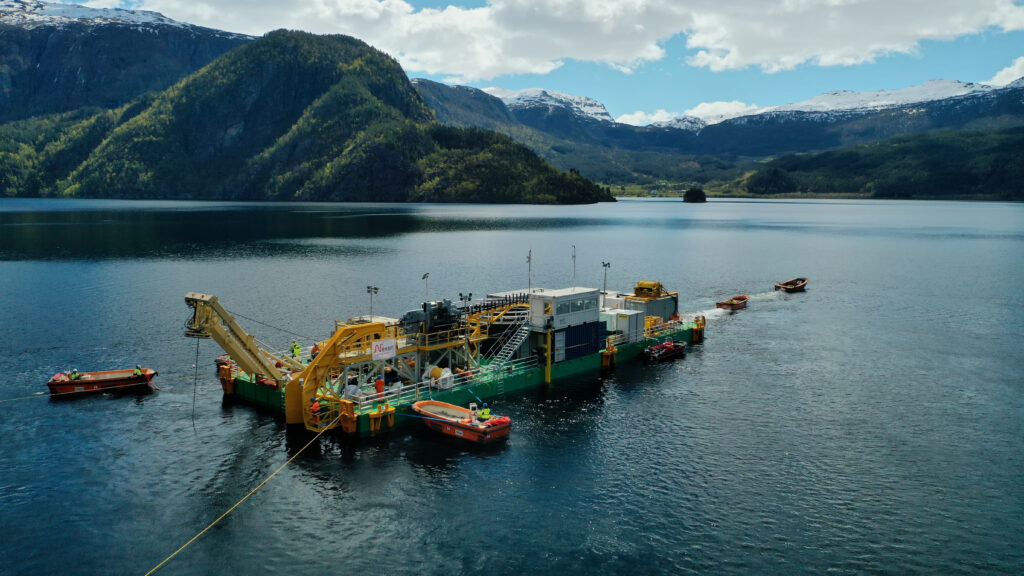The world’s longest subsea electricity interconnector, the North Sea Link, has started operation.
Connecting Blyth in Northumberland and the Norwegian village of Kvilldal, near Stavanger, the £1.37 billion (€1.6 billion) interconnector has been developed as a joint venture by National Grid and Norwegian operator Statnett.
The 450-mile cable started operating on Friday 1 October, with an initial capacity of 700MW, which will be increased gradually to its full capacity of 1400MW over the next three months. This follows Statnett’s standard approach for integrating new interconnectors.
Norway sources almost all its electricity from hydropower plants that are connected to large reservoirs, allowing them to respond faster to fluctuations in demand than other major generation technologies. But this is still subject to weather conditions and varies throughout seasons.
Britain will be able to benefit from this secure, green source of energy, while Norway will be able to import power when wind generation is high and demand low to conserve water in its reservoirs.
North Sea Link is National Grid’s first interconnector with Norway and its fifth overall, operating links to Belgium, France and the Netherlands. Electricity imported via these connections will be 90% from zero carbon sources by 2030, the company said.
The interconnector helps strengthen a bond that goes back decades between the UK and Norway said UK Energy, Clean Growth and Climate Change Minister Greg Hands, and enables “both nations to benefit from the flexibility and energy security that interconnectors provide”.
“As we prepare to host the UN COP26 summit, this pioneering partnership shows first-hand how crucial international cooperation will be in helping us to deliver on our net zero ambitions and provide clean renewable energy to millions of UK homes.”
The interconnector took six years to build, with work to lay the undersea cables beginning in 2018. It took more than four million working hours to complete, including 5,889 working days at sea.
“North Sea Link is a truly remarkable feat of engineering,” added Cordi O’Hara, president of National Grid Ventures.
“We had to go through mountains, fjords and across the North Sea to make this happen. But as we look forward to COP26, North Sea Link is also a great example of two countries working together to maximise their renewable energy resources for mutual benefit.”
The interconnector going live will bolster Britain’s connection at a time when margins have been tight, in part because the IFA1 interconnector is functioning at reduced capacity following a fire in September.
On 20 August, net interconnector imports reached an instantaneous high of 5,847MW at 12:20pm during a test run of the North Sea Link according to EnAppSys. This marked a record high for Britain, providing a glimpse of the future.
While the North Sea Link is currently the longest subsea interconnector, last week developer Xlinks announced plans for four 3,800km High-Voltage Direct Current (HVDC) sub-sea cables connecting Britain to solar and wind generation in Morocco. The 10.5GW Morocco-UK Power Project would also include battery storage and help to create an export-led cable manufacturing industry in Britain, the company said.






